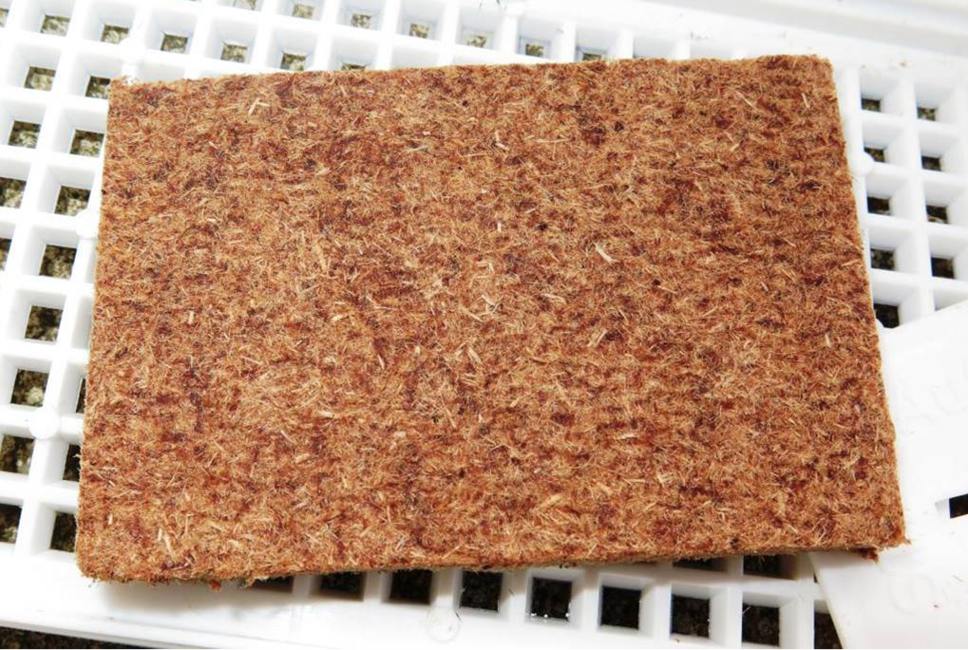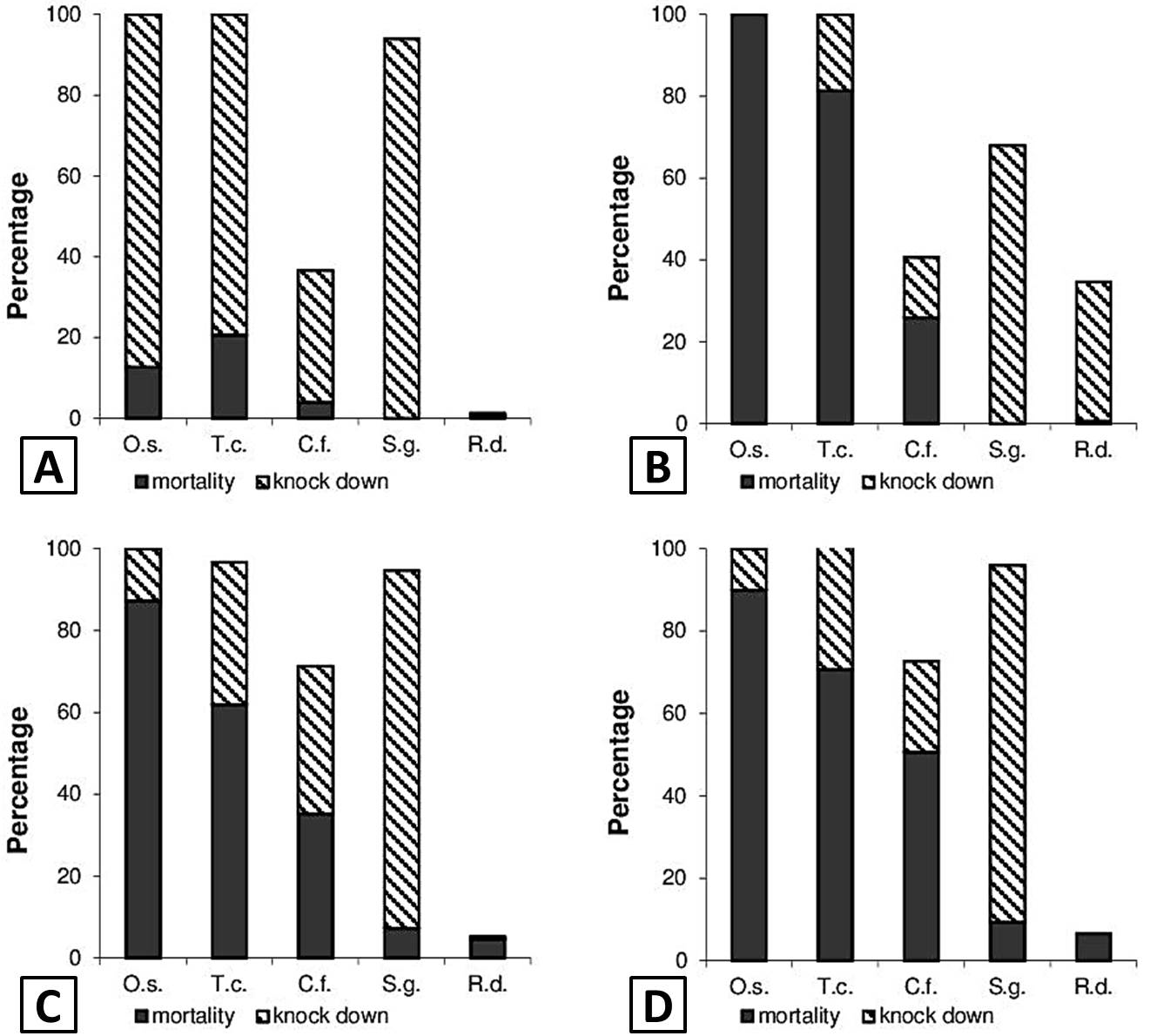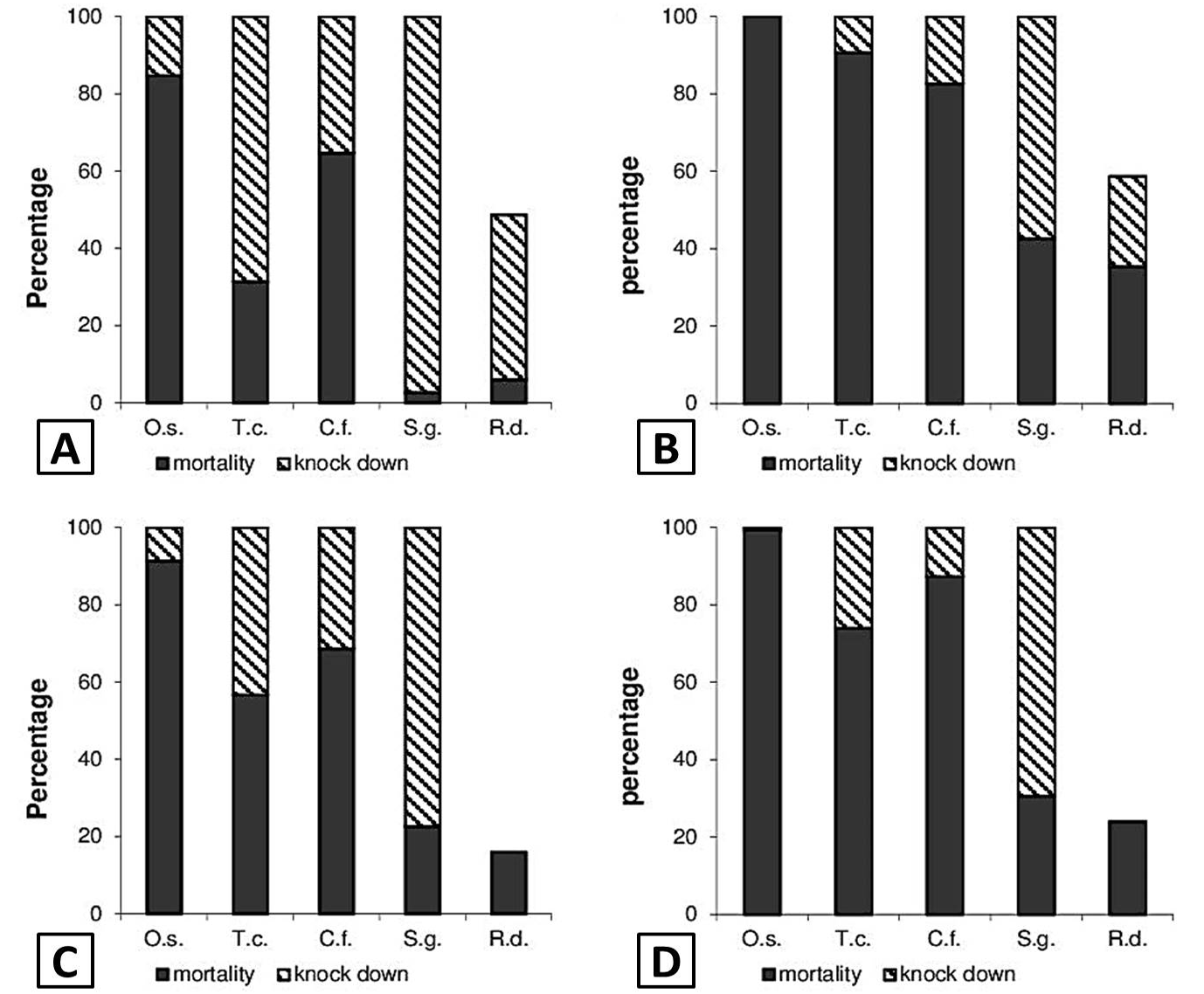Short-Exposure Biological Activity of Dichlorvos Insecticide Strips on Coleopteran Storage Pests under Two Evaporation Regimes: Can Slow-Release Dichlorvos Formulations Replace Aerosols?
Short-Exposure Biological Activity of Dichlorvos Insecticide Strips on Coleopteran Storage Pests under Two Evaporation Regimes: Can Slow-Release Dichlorvos Formulations Replace Aerosols?
Radek Aulicky1,*, Vaclav Stejskal1 and George Opit2
Visualization of the experimental chamber with the internal replaceable plastic tent.
Fragment (30 g) of the porous strip evaporating strip: Detail of porous structure.
Temporal percentage change in weight by DDVP after their opening in the experimental chamber. The black line shows change in weight from the initial 30.66 ± 0.59 g of DDVP strips (n =3) which is the result of gradual evaporation of the active ingredient in the strips. The dotted line represents the linear regression line that describes DDVP evaporation rate (data for the first day is excluded because of weight increase caused by initial moisture absorption from air into the porous matrix of the strip).
Efficacy of DDVP strip on five species of stored product beetles (Coleoptera): 1 h exposure under repressive evaporative regime: A, mortality estimated 24 h after exposure; B, mortality estimated 48 h after exposure; and preventive evaporative regime: C, mortality estimated 24 h after exposure; D, mortality estimated 48 h after exposure.
Efficacy of DDVP strip on five species of stored product beetles (Coleoptera): 6 h exposure under repressive evaporative regimes: A, mortality estimated 24 h after exposure; B, mortality estimated 48 h after exposure; and preventive evaporative regimes: C, mortality estimated 24 h after exposure; D, mortality estimated 48 h after exposure.
Efficacy of DDVP strip on five species of stored product beetles (Coleoptera): 24 h exposure under repressive evaporative regimes: A, mortality estimated 24 h after exposure; B, mortality estimated 48 h after exposure; and preventive evaporative regimes: C, mortality estimated 24 h after exposure; D, mortality estimated 48 h after exposure.
















